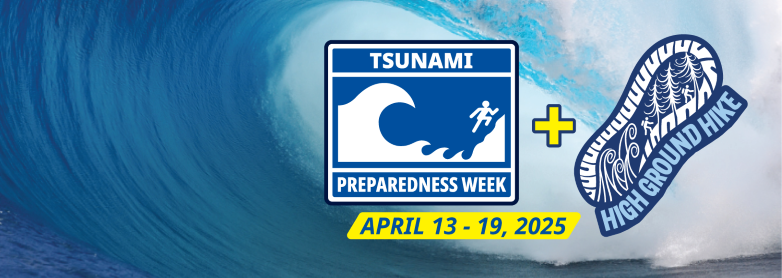
Do you know what to do in the event of a tsunami in Colwood?
Join us for a Hike to High Ground to practice tsunami preparedness.
Lace up your shoes and get ready to hike to high ground with members of Royal Roads University (RRU) and the City of Colwood on Thursday, April 17 from 10 a.m. to 12 p.m.
Hosted in partnership with RRU, the event will provide attendees with the opportunity to practice what to do in the event of a real tsunami. Colwood Fire Rescue personnel will be on hand to your questions, showcase emergency equipment and display area tsunami evacuation maps.
📅 Thursday, April 17
🕙10 a.m. – 12 p.m.
📍Royal Roads University lower parking lot (2005 Sooke Rd.)
- Meet in the Royal Roads lower parking area to join a group or take a self-guided walk up to the central parking area, following the evacuation path out of the tsunami zone.
- Stop at booths along the way to connect with community service members and learn about how to prepare for a tsunami and what to do when there's a tsunami warning:
- City of Colwood
- Colwood Fire Department
- West Shore Emergency Support Service
- Royal Roads Student Services
- Ministry of Emergency Management and Climate Readiness
All are welcome, including on-leash pets.
Parking is free for attendees during the event. Arrive and complete the walk at anytime from 10 a.m. - 12 p.m.
Learn About Tsunami Alerts
BC is a seismically active province and coastal communities like Colwood are at risk of tsunami caused by earthquakes.
In the event of a tsunami, people must be ready to respond quickly. The key is to know how you'll receive information, where to go, and how to get there.
- Subscribe to West Shore Alerts to ensure you receive emergency information specific to Colwood.
- An information statement is issued when there is no threat or when a very distant event occurs that is good to be aware of.
- A watch is issued when a distant tsunami is possible. People should stay tuned for more information and be prepared to act.
- An advisory is issued when strong currents and waves may occur that could be dangerous to people close to the water. People should stay out of the water and away from beaches and waterways.
- A warning is issued when dangerous coastal flooding and strong currents are possible. People will be instructed to move to high ground.
Be prepared for a tsunami
- Familiarize yourself with local evacuation routes and reception centre locations.
- If you feel an earthquake, drop, cover and hold on until the shaking stops, then move to higher ground immediately.
- Once you reach high ground, stay there. Wait for the "all clear" from local officials to confirm the threat has passed. Tsunami wave can last several hours.
- Always follow instructions from local officials during an emergency, beginning with messages on West Shore Alert.
- If you are not in a tsunami zone, stay home and be prepared to help family, friends, and neighbours.
Know Colwood's tsunami areas
- Did you know that the majority of Colwood is NOT within the tsunami inundation zone? Check the CRD Tsunami Information portal to better understand areas at risk.
- The Ministry of Emergency Management and Climate readiness (EMCR) is the lead co-ordinating agency for emergency management activities, including preparedness, response, mitigation and recovery.
- EMCR issues emergency alerts on behalf of the Province and relies on several alerting systems in the event of a tsunami.
- There are local government emergency alerts like West Shore Alert, coastal siren systems (such as at CFB Esquimalt), local media and social media, and the National Public Alerting System.
- The last major tsunami to hit BC shores was on March 27, 1964 when Port Alberni was flooded following the 9.2 magnitude Great Alaska Earthquake.
